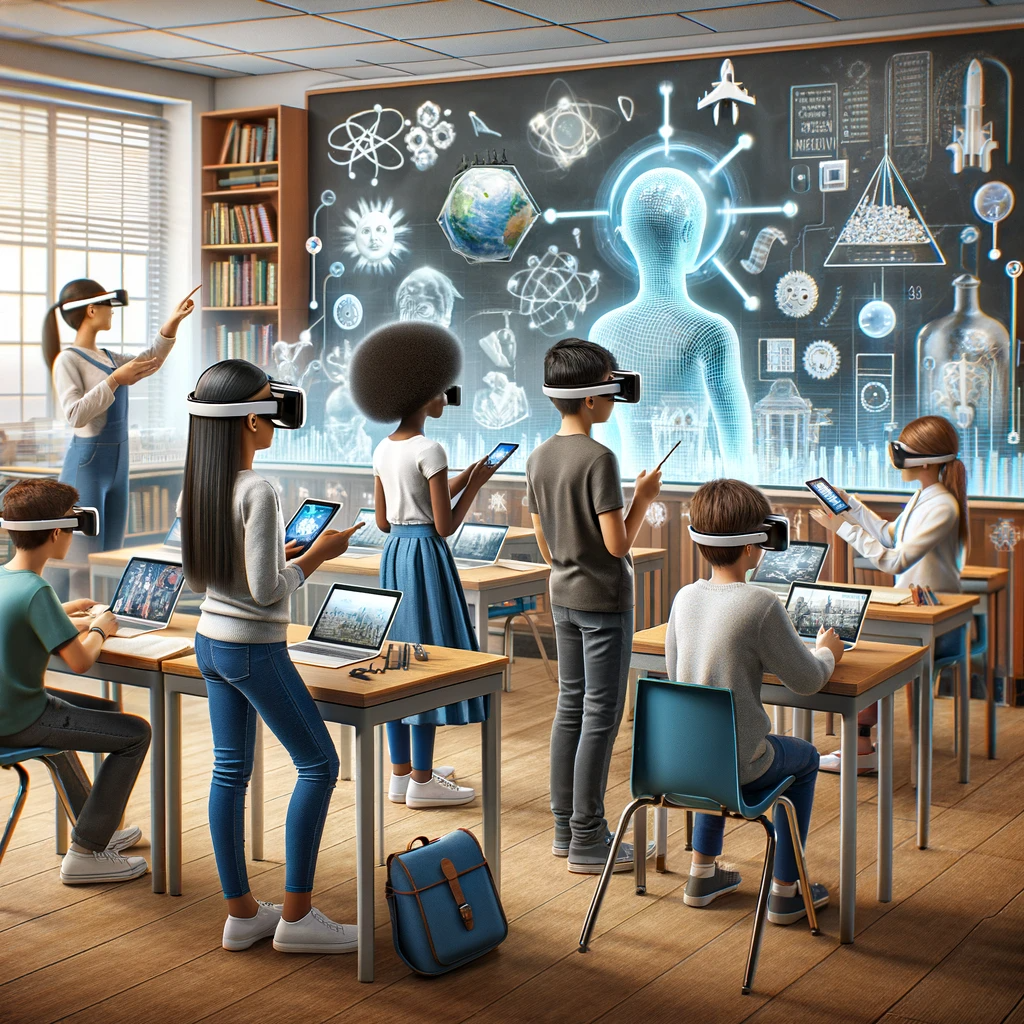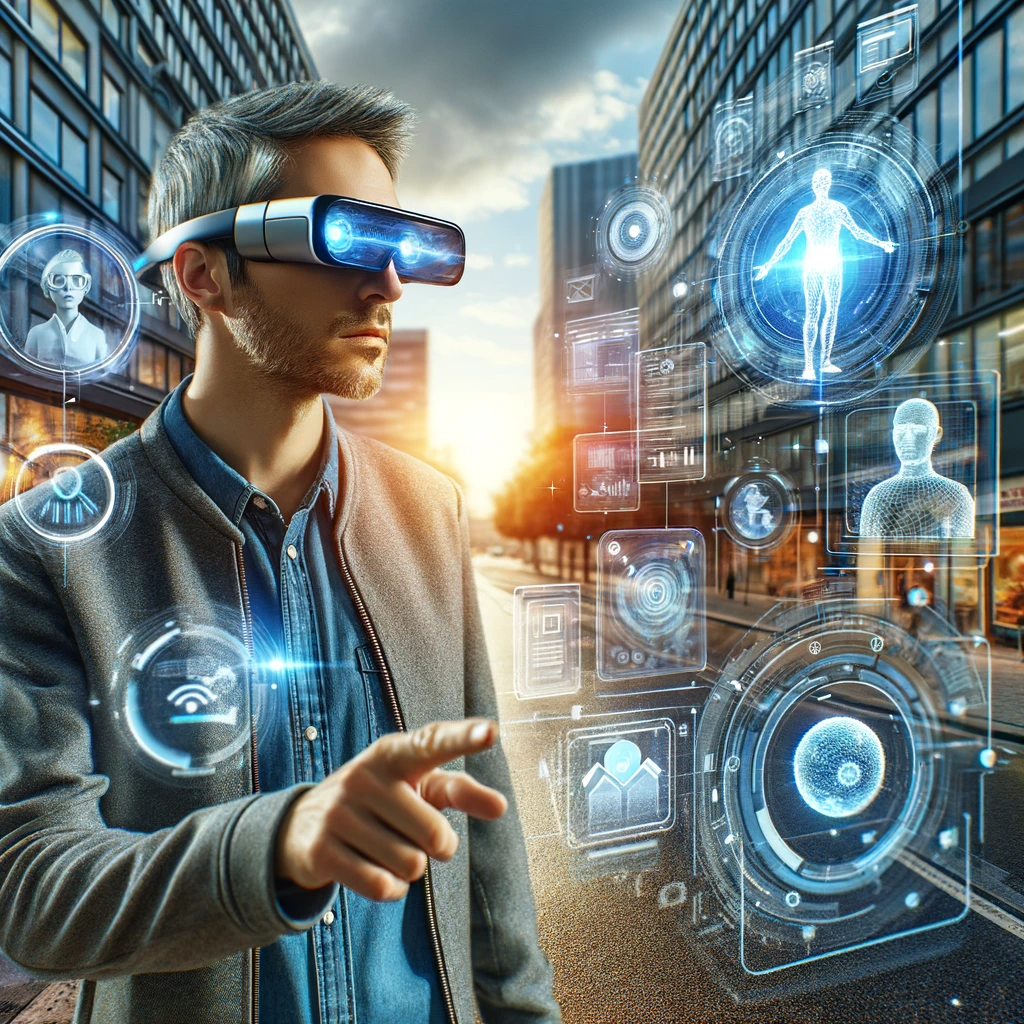In today’s rapidly evolving technological landscape, the synergy between Artificial Intelligence (AI) and Augmented Reality (AR) is creating groundbreaking opportunities across various sectors. Individually, AI and AR are powerful tools: AI, with its ability to learn and process vast amounts of data, and AR, which enhances the real world with digital overlays. When combined, they create dynamic, intelligent experiences that transcend traditional boundaries of interaction and perception.
The fusion of AI and AR is revolutionizing industries by introducing a new level of interactivity and smart automation. In gaming, this combination is creating immersive environments that respond intelligently to user actions. In education, AI-driven AR experiences offer interactive and personalized learning journeys. Furthermore, in fields as diverse as healthcare, retail, and entertainment, these technologies are enabling more engaging, informative, and tailored experiences.
This article will delve into the intricacies of AI and AR’s integration, exploring their transformative impact in gaming, education, and beyond. It will shed light on how the convergence of AI’s analytical power and AR’s visual enhancements are redefining what’s possible in interactive technology. Readers can expect to gain insights into the current state and future potential of “AI and AR” applications, understanding the scope and significance of “augmented reality applications” and “AI-driven AR experiences.” The aim is to provide a comprehensive view of this innovative fusion and its implications for various industries.

The Fusion of AI and AR: An Overview:
Artificial Intelligence (AI) and Augmented Reality (AR) are two technological paradigms that, when combined, unlock a new realm of possibilities. AI, characterized by its ability to learn, reason, and process information like a human, has become a cornerstone in technological advancement. AR, on the other hand, involves overlaying digital information onto the physical world, enhancing real-life environments with virtual details. The convergence of these two technologies creates an ecosystem where interactive experiences are not only visually enhanced but also intelligently responsive.
The synergy between AI and AR has been made possible due to significant technological advancements. Breakthroughs in machine learning, computer vision, and sensor technology have allowed for the seamless integration of AI’s analytical capabilities with AR’s immersive experiences. This union enables AR applications to not only display digital information but also understand and interact with the user environment in a more meaningful way.
In this section, we explore how AI algorithms enhance AR experiences, providing intelligent, interactive elements that adapt to user interactions and environmental contexts. From AI-driven object recognition in AR settings to context-aware informational overlays, the “AI and AR synergy” is redefining user experiences across multiple domains. This synergy harnesses the “technological advancements” of both fields, leading to “AI-enhanced AR” applications that are more intuitive and useful for users.
AI and AR in Gaming:
The gaming industry has been particularly transformed by the integration of AI and AR technologies. AI-driven AR brings a new level of immersion and interactivity to gaming, creating experiences that are deeply engaging and responsive. AI enhances AR gaming environments with elements that can learn from and react to players’ actions and decisions, offering a personalized and dynamic gaming experience.
Examples of popular AI and AR integrated games showcase how these technologies are being used to create new gaming formats and experiences. From mobile games that overlay digital elements onto the real world to complex gaming environments that adapt and change in real-time, the possibilities are vast and ever-expanding.
The future potential of AI and AR in gaming is also immense. Emerging trends and developments could include more realistic and interactive AR environments, AI that can create dynamic storylines and challenges, and advancements in AR hardware that make these experiences more accessible and immersive.

Transforming Education with AI and AR:
AI and AR are also making significant inroads in the field of education, transforming traditional learning methodologies. These technologies offer interactive and engaging learning experiences that can be tailored to individual learners’ needs. AI and AR in education provide students with immersive educational content, making complex concepts easier to understand and more engaging to explore.
Real-world applications of AI and AR in education range from classroom teaching aids to distance learning tools and specialized training programs. These technologies enable interactive and experiential learning, allowing students to visualize and interact with educational content in new and innovative ways.
However, implementing AI and AR in educational settings also comes with challenges. These include ensuring equitable access to these technologies, addressing privacy and security concerns, and integrating these tools effectively into existing educational frameworks.
Immersive Experiences Beyond Entertainment:
The applications of AI and AR extend far beyond gaming and education, into realms such as healthcare, retail, and tourism. In these sectors, AI and AR are used to create immersive experiences that are both informative and engaging. For instance, in healthcare, AI and AR are being used for surgical training, patient education, and treatment visualization. In retail, these technologies help customers visualize products in real-world settings, enhancing the shopping experience. In tourism, AR provides interactive guides and informational overlays to enhance the sightseeing experience.
These immersive AR experiences, driven by AI, are transforming how services are delivered and experienced in various industries. They offer innovative ways to engage with customers and provide information, enhancing the overall user experience.
Future Trends and Ethical Considerations:
As AI and AR technologies continue to evolve, they promise to bring even more innovative applications and experiences. Future trends may include more advanced AI that can understand and predict user needs in AR environments, as well as the development of more seamless and integrated AR interfaces.
However, the integration of AI and AR also raises ethical considerations and potential challenges. These include concerns over privacy and data security, the need for responsible and unbiased AI algorithms, and the challenges of ensuring equitable access to these technologies. It is essential for developers and users alike to be aware of these issues and work towards responsible and ethical use of AI and AR technologies.

Conclusion:
In conclusion, the combination of AI and AR is reshaping various sectors, offering new and innovative ways to interact with technology. From gaming and education to immersive experiences across different industries, the synergy of AI and AR is creating enhanced, intelligent experiences. As we look towards the future, this convergence holds the promise of further transforming our interaction with the digital world, bringing more personalized, efficient, and engaging experiences. However, it is crucial to navigate these advancements with an awareness of the ethical implications and challenges, ensuring that the development and deployment of these technologies benefit all users.
